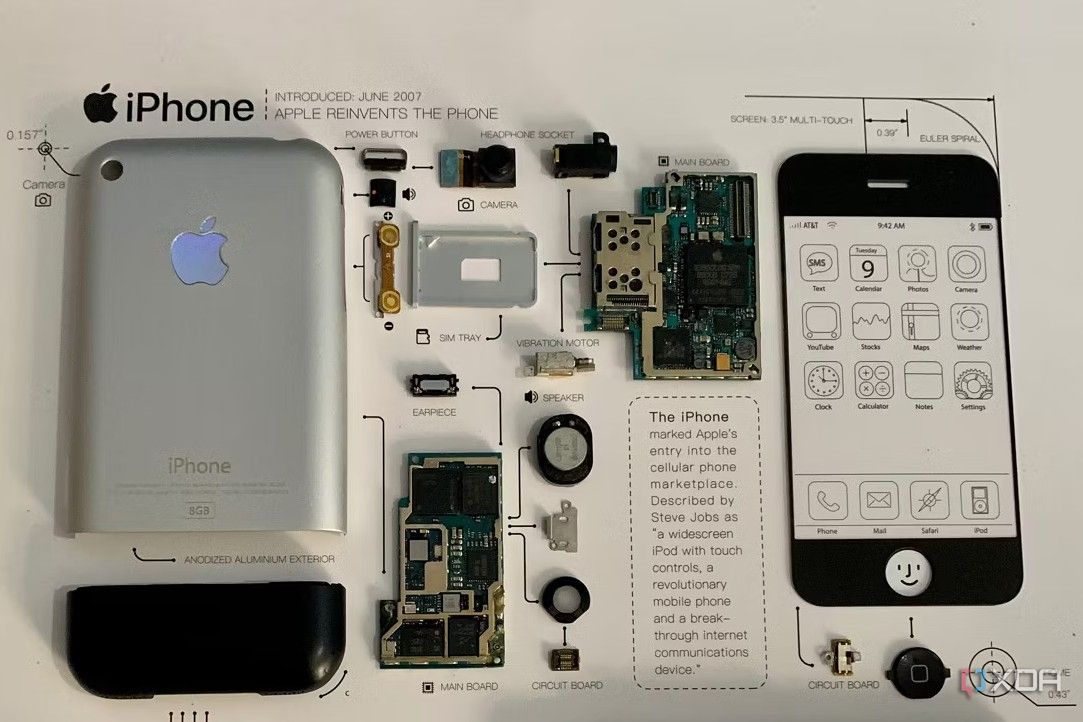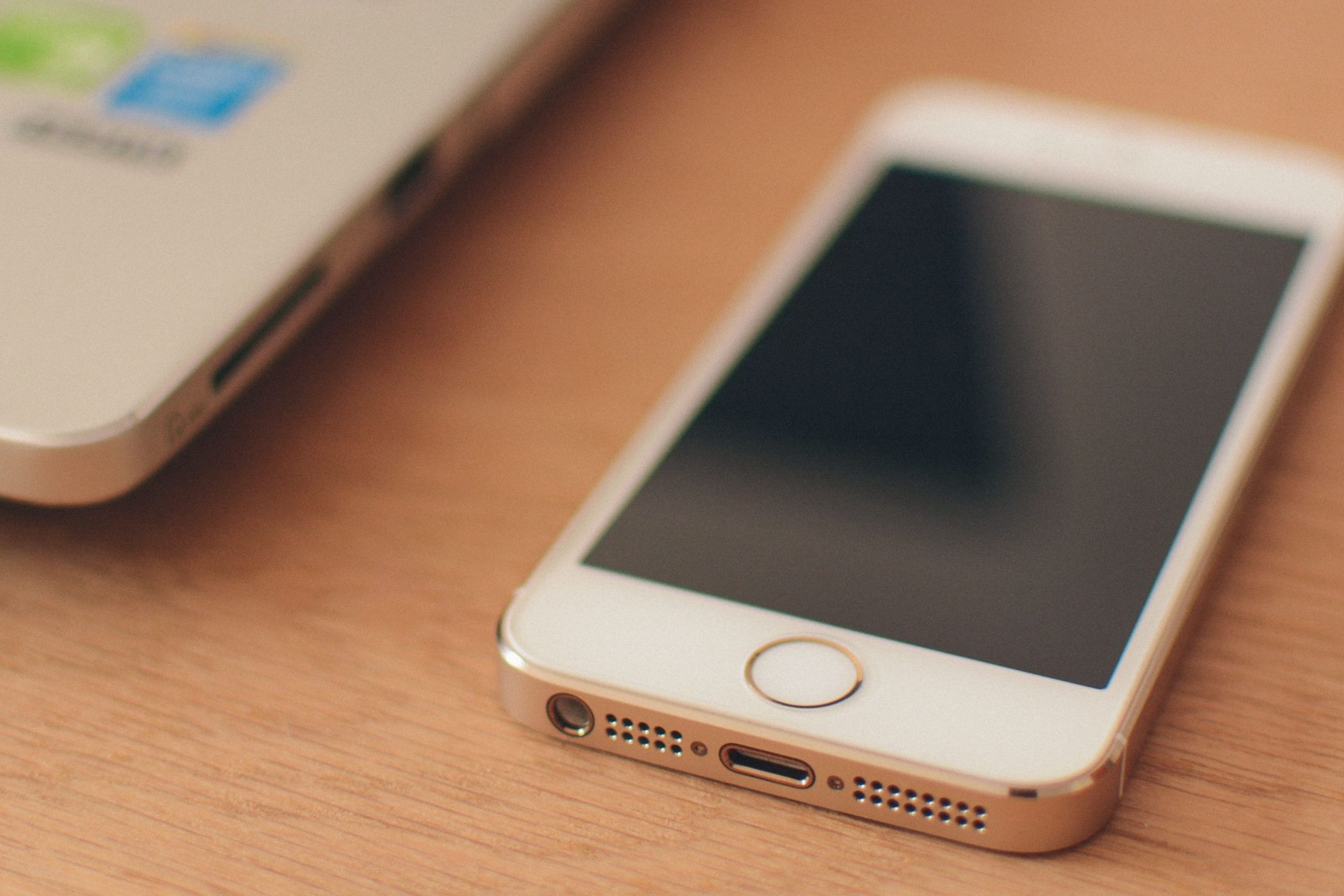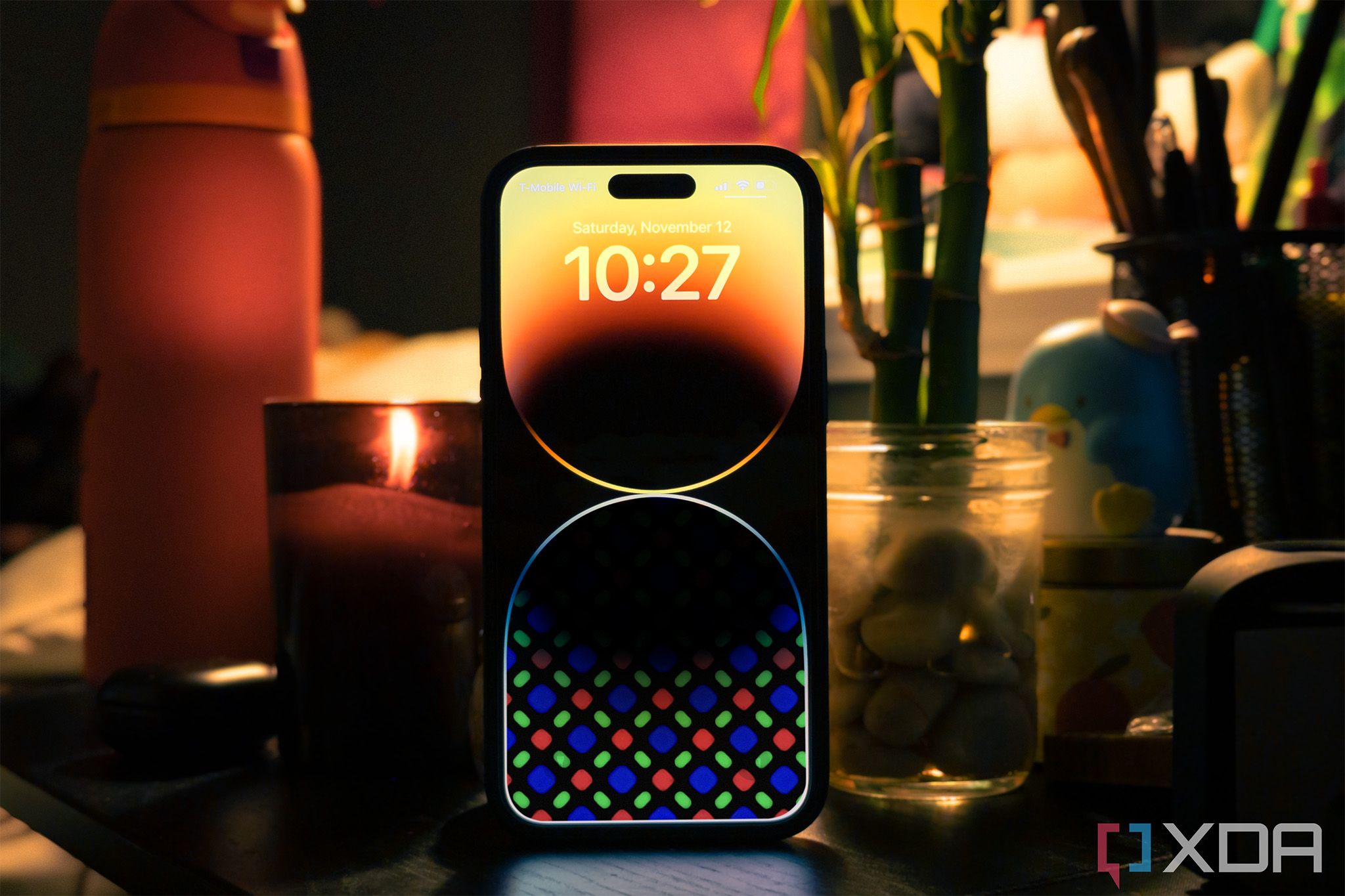4 thay đổi phần cứng mà iPhone đã thực hiện trước điện thoại Android
Theo dõi những điểm chính: iPhone đã có một lợi thế đáng kể so với điện thoại Android, được ra mắt gần một năm trước và đặt tiêu chuẩn trong ngành công nghiệp. iPhone là chiếc điện thoại đầu tiên sử dụng kính Gorilla Glass của Corning, trong khi điện thoại Android ban đầu sử dụng màn hình nhựa trước khi chuyển đổi. Apple giới thiệu vi xử lý 64-bit trong iPhone 5s, cho phép các tính năng tiên tiến hơn trên điện thoại thông minh và ảnh hưởng đến các nhà sản xuất khác.
Apple hiện nay được biết đến với việc đến muộn khi có những bổ sung mới, đặc biệt là trong lĩnh vực di động. Công ty này có lịch sử mất rất nhiều thời gian trước khi tung ra các bổ sung mới cho đám đông và đào kích trên các xu hướng hiện tại, chẳng hạn như một cổng USB-C. Trong khi người dùng iOS vì vậy bỏ lỡ công nghệ di động mới nhất có sẵn trên một số điện thoại Android, họ vẫn có thể tận hưởng trải nghiệm ổn định, quen thuộc. Tuy nhiên, mặc dù đây là danh tiếng của Apple vào năm 2023, iPhone đã từng dẫn đầu và đặt tiêu chuẩn trong quá khứ. Có bốn điều cụ thể mà chiếc iPhone phổ biến đã thực hiện trước bất kỳ điện thoại Android nào.
1. Họ đã tồn tại. Điều đầu tiên mà iPhone thực hiện trước bất kỳ điện thoại Android nào là sự tồn tại. Steve Jobs công bố phiên bản iPhone đầu tiên vào tháng 1 năm 2007 và nó có thể mua vào tháng 6. Trong khi đó, chiếc điện thoại Android đầu tiên được tung ra thị trường người tiêu dùng là T-Mobile G1 (còn được gọi là HTC Dream) vào tháng 9 năm 2008. Đó là sự khởi đầu trước hơn một năm. Sau khi iPhone đầu tiên được ra mắt, các nhà sản xuất Android khác đã bắt đầu sao chép công thức, vì nó đã thành công một cách khách quan. Và bằng chứng lớn nhất cho sự thành công này là nó đã vượt qua thử thách của thời gian. Trong khi nhiều điện thoại thông minh khác đã thay đổi hình dạng và hình thức, iPhone vẫn có diện mạo như cũ kể từ khi ra mắt. Tất nhiên, iPhone 14 Pro Max không giống như mẫu năm 2007, nhưng khung chính vẫn không thay đổi nhiều, và Apple vẫn tiếp tục giới thiệu những cải tiến dần dần trên thiết bị.
2. Đặc trưng của Corning’s Gorilla Glass Một trong những sự thật ít được biết đến về iPhone gốc là nó là chiếc điện thoại đầu tiên sử dụng kính Gorilla Glass của Corning. Lúc đó, nó thậm chí còn không được gọi là vậy, nhưng đó là cùng một thương hiệu mà các điện thoại Android mới nhất dựa vào ngày hôm nay. Khi Jobs đặt một trong những mẫu iPhone đầu tiên vào túi của mình, ông nhận thấy có một số vết trầy xước trên màn hình do chìa khóa của mình gây ra. Rõ ràng, trong khi nhựa nói chung có độ bền cao hơn kính, nó lại dễ bị trầy xước. Và mặc dù Jobs có vẻ như đã giới thiệu một chiếc iPhone với màn hình nhựa vào tháng 1 năm 2007, sản phẩm tiêu dùng vào tháng 6 đã chuyển sang kính. Vì vậy, không có chiếc iPhone nào đã được ra mắt với màn hình nhựa. Trong khi T-Mobile G1 sử dụng Gorilla Glass, nhiều nhà sản xuất điện thoại Android đã tung ra các điện thoại có màn hình nhựa trong những ngày đầu của họ. Và trong khi chúng ta không còn thấy điện thoại thông minh phổ biến với màn hình nhựa trên thị trường, nhà sản xuất điện thoại Android mất một thời gian để hoàn toàn chuyển sang kính.
3. Giới thiệu vi xử lý 64 bit. Một sự ra mắt quan trọng khác của iPhone là vi xử lý 64 bit. Apple lần đầu lắp chip A7 64 bit vào iPhone 5s vào năm 2014. Khi đó, điện thoại thông minh chưa được tiên tiến hoặc mạnh mẽ, và nhiều nhà phê bình cho rằng sự chuyển đổi này là quá mức cho một chiếc điện thoại. Họ không biết rằng. Khoảng một năm sau, HTC tung ra điện thoại Android 64 bit đầu tiên, Desire 510. Và, hiển nhiên, các nhà sản xuất khác sau đó đã đi theo. Ngày nay, hầu hết các điện thoại cao cấp đều có hơn 4GB RAM, điều này không thể thực hiện nếu các nhà sản xuất điện thoại không theo đuổi vi xử lý 32 bit. Đó chưa kể đến việc vi xử lý 64 bit có nhiều không gian lưu trữ dữ liệu hơn, cho phép chúng xử lý các tác vụ ở tốc độ nhanh hơn. Vì vậy, nhờ vi xử lý 64 bit, điện thoại thông minh của chúng ta hiện nay trở nên có khả năng thực hiện các tác vụ tính toán tiên tiến mặc dù kích thước tương đối nhỏ.
4. Bỏ rơi SIM vật lý Cuối cùng, các mô hình iPhone 14 và iPhone 14 Pro là những chiếc điện thoại thông minh đầu tiên không có khe cắm thẻ SIM vật lý tại Hoa Kỳ. Mặc dù việc di chuyển này gây tức giận cho nhiều người dùng, nó đã thúc đẩy các nhà mạng áp dụng công nghệ mới và giúp người dùng dễ dàng cài đặt eSIM bằng ứng dụng của họ. Nhiều nhà mạng đã cho phép người dùng tải xuống eSIM bằng các ứng dụng riêng. Bằng việc này, ngay cả khi ai đó chuyển từ iOS sang Android (lỡ tay), họ vẫn có thể dựa vào ứng dụng Android của nhà mạng của mình để lấy lại eSIM của mình.
Cái tiếp theo là gì? Nếu bạn nhìn thấy khuôn mẫu này, bạn có thể thấy rằng iPhone đã từng dẫn đầu trong lĩnh vực phần cứng hơn. Bây giờ, hầu hết những bổ sung thú vị chúng ta thấy trên điện thoại thông minh của Apple đã có sẵn trên Android trong một thời gian dài. Điều này bao gồm màn hình luôn hiển thị, hệ thống camera sau kép và ba camera sau, hỗ trợ 5G, sạc không dây và nhiều hơn nữa. Đến thời điểm này, khó đoán iPhone sẽ dẫn đầu vào điểm nào tiếp theo. Bây giờ khi các thiết bị của chúng ta đã trưởng thành và các nhà sản xuất Android đã thử nghiệm với mọi loại khái niệm điện thoại kỳ quặc, khó để nhìn thấy Apple tung ra một phần cứng mới mà Android đã triển khai trên một thiết bị nào đó. Và nếu những tin đồn về iPhone 15 và iPhone 15 Pro vào năm nay chứng minh đúng, thì các mẫu điện thoại của năm nay có lẽ sẽ không bao gồm bất kỳ đổi mới mới nào.
Nguồn: https://www.xda-developers.com/hardware-iphone-before-android/
Key Takeaways
- The iPhone had a significant head start on Android phones, being released more than a year earlier and setting industry standards.
- The iPhone was the first to feature Corning’s Gorilla Glass, while Android phones initially used plastic screens before making the switch.
- Apple introduced the 64-bit processor in the iPhone 5s, which allowed for more advanced capabilities in smartphones and influenced other OEMs to follow suit.
Apple is notorious these days for arriving late to the party, particularly in the mobile department. The company has a history of taking its sweet, sweet time before launching new additions to the masses and catching up on current trends, like a USB-C port. While iOS users consequently miss out on the latest mobile technology available on some Android phones, they still get to enjoy a stable, familiar experience.
But, while this is Apple’s reputation in 2023, the iPhone used to lead the way and set industry standards in the past. There are four specific things the popular iPhone did before any Android phone.
1 They existed
Well, the first thing the iPhone did before any Android phone is, you know, exist. Steve Jobs announced the original iPhone back in January 2007, and it became available to purchase in June. Meanwhile, the first Android phone to hit the consumer market was the T-Mobile G1 (aka the HTC Dream) in September 2008. That’s more than a year head start.
Following the first iPhone’s release, other Android OEMs started copying the formula, as it was objectively successful. And the biggest proof of its success is it standing the test of time. While many other smartphones have shifted shapes and forms, the iPhone has generally looked the same since its release. Of course, the iPhone 14 Pro Max isn’t identical to the 2007 model, but the main build has remained somewhat untouched, and Apple just continues to introduce gradual improvements across the device.
2 Feature Corning’s Gorilla Glass
One of the lesser-known facts about the original iPhone is that it was the first to feature Corning’s Gorilla Glass. At the time, it wasn’t even called that, but it’s the same brand that the latest Android phones rely on today. When Jobs placed one of the first iPhone prototypes in his pocket, he noticed some scratches on the screen caused by his keys. It turns out that while plastic is generally more shatter-resistant than glass, it’s highly susceptible to scratches. And despite Jobs seemingly presenting an iPhone with a plastic screen in January 2007, the consumer product in June had already made the switch to glass. So, no iPhone ever released had a plastic display.
While the T-Mobile G1 used Gorilla Glass, many Android OEMs released phones with plastic screens during their early days. And while we no longer see popular smartphones with plastic displays on the market, it took Android phone manufacturers a while to completely make the switch.
3 Introduce a 64-bit processor
Another major iPhone introduction was the 64-bit processor. Apple first packed its 64-bit A7 chip in the iPhone 5s back in 2014. At the time, smartphones weren’t as advanced or capable, and many critics perceived the shift as overkill for a phone. Little did they know, though. Around a year later, HTC released the first 64-bit Android phone, the Desire 510. And, naturally, other OEMs then followed suit.
Today, most flagship phones pack more than 4GB of RAM, which wouldn’t have been possible had OEMs stuck to 32-bit processors. That’s not to mention that 64-bit chips have more room for data, which enables them to process tasks at a faster rate. So, thanks to the 64-bit switch, our smartphones today have become capable of executing advanced computational actions despite their relatively small sizes.
4 Ditch the physical SIM
Lastly, the iPhone 14 and iPhone 14 Pro models are the first smartphones to ditch the physical SIM card slot in the U.S. While this controversial move has angered many users, it pushes carriers to adopt the latest technology and make it easier for users to install an eSIM using their apps. Many carriers already allow users to download an eSIM using the dedicated applications. So even if someone is switching from iOS to Android (by mistake), they could still rely on their carrier’s Android app to retrieve their eSIM.
What’s next?
If you observe the pattern here, you may notice that the iPhone used to lead in the hardware department more. Now, most of the exciting introductions we see on Apple’s smartphones have been available on Android for a while. These include the always-on display, dual and triple rear camera systems, 5G support, wireless charging, and more.
At this point, it’s hard to guess where the iPhone will lead next. Now that our devices have matured and Android OEMs have experimented with all sorts of wild phone concepts, it’s hard to see Apple launching a hardware addition that hasn’t already been implemented in an Android device somewhere. And if the iPhone 15 and iPhone 15 Pro rumors turn out to be true, then this year’s iPhones likely won’t include any fresh innovations, either.
[ad_2]




